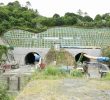DAVAO CITY – After unofficially breaking the world record for planting the most trees in an hour, cacao growers and environment groups raised concerns to the event organizers on how to help ensure the growth of cash-crop seedlings.
The Treevolution event held last September 26 reportedly planted 3,571,480 seedlings in 260 areas in six regions in Mindanao, mostly comprising of cacao, coffee and rubber tree seedlings.
In Davao City, about 71,000 seedlings were planted in four locations.
But the environmentalist group Panalipdan Southern Mindanao challenged the Treevolution organizers to ensure that they have measures to monitor and correct their process.
Their spokesperson, former University of the Philippines physics Professor Kim Gargar said, “There must also be soil analysis to ensure soil fertility is known such that fertilizer application shall be planned beforehand. Then, maintenance also includes weeding which is very labor-intensive. So imagine how many people should be mobilized for the post-tree planting activities.”
The Treevolution co-sponsor Mindanao Development Authority (MinDA) said they will ensure the monitoring of the plants by enlisting farmers, non-government organizations and institutions to act as stewards on the plant site.
Gargar, however, pointed out that the Treevolution could not qualify under global standards as a reforestation bid.
“The TreeVolution would not pass the standards because it implements monocropping plantation… They only planted less than ten species like coffee, cacao and rubber,” he said.
Gargar said the acceptable tropical forest reforestation method is to plant at least 30 tree species per hectare.
“The reason behind that in simple terms is to prevent pest infestation due to monocropping or low number of species present in the area and to conserve the endemic biodiversity in the area,” he said.
He added that to make up for lost forest cover, some 250,000 hectares must be reforested to just recover 1% of lost forest cover.
For his part, Cacao Industry Development Assoication of Mindanao (Cidami) Executive Director Val Turtur said they are concerned the cacao seedlings may not have been properly planted by volunteers because of the event’s time constraints.
Turtur told Davao Today that there is a protocol in planting cacao seedlings.
“One has to dig a one-foot deep and one-foot diameter hole. Then you have to separate the top-soil from the sub-soil, and put the top-soil back first soil with the seedlings because it is the more fertile soil. There must be basal fertilization put into the hole before planting the seeds,” he said.
He also added that cacao trees must be three feet apart from each other, and the cacao tree seedlings must be covered with a coconut fronding to protect itself from the sun.
Turtur said planting just one seedling using this process would take up ten minutes, or only five seedlings in an hour.
But he said the problem was that Treevolution organizers aimed for one person to plant twenty tree seedlings in that time frame.
He said the lead organizer the Department of Environment and Natural Resources had consulted with them during the planning stage of the Treevolution and he had raised these concerns.
“But since they want to make the world record, there was a compromise to shortcut the process,” Turtur said.
Turtur said there may be some volunteers in the event who may be familiar with the planting process. But he doubted that many of them may not know of the procedure.
Turtur said they would volunteer their field techincians to go to the planting area in Barangay Magsaysay of Marilog District to check the conditions of the seedlings.
He said they would take measures to “correct” some of the positions of the seedlings, as he assured that there would be no uprooting.
“This is part of our contribution. We just have to help each other out,” Turtur said.
Turtur said Cidami would meet with DENR regional officials next week to discuss how to ensure the growth and cultivation of the cacao seedlings.
Cidami earlier announced they are targetting an expansion of cacao production in Mindanao from 10,000 to 150,000 hectares by the year 2020.
MinDA also has been promoting cacao production after production of this product has dropped significantly in Africa. (Tyrone A. Velez/davaotoday.com)










